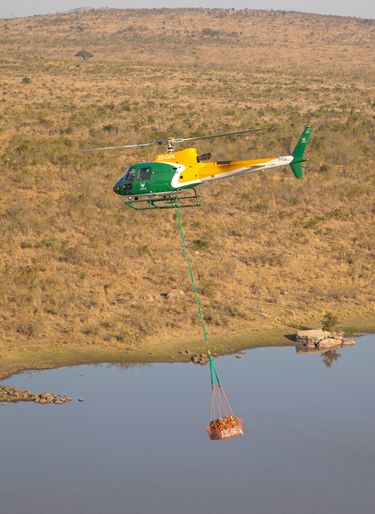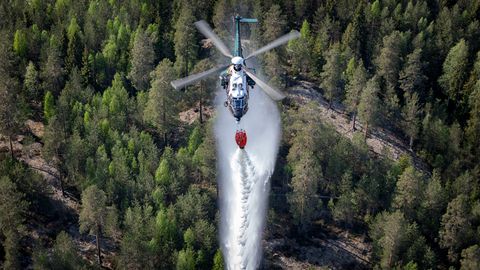David Simelane is the chief pilot of SANParks, the South African National Parks service. With a fleet of three (soon to be four) Airbus H125 helicopters and a team of 11 people (including four pilots), they help safeguard the biodiversity and wildlife in Kruger National Park, as well as protecting the animals from poachers – preserving the park for both South African citizens and international visitors.
Airbus Helicopters: Why does the H125 make sense for SANPARKS?
David Simelane: Our responsibility is to make sure that we provide the aerial support that is required over these 2 million hectares. We are also expanding our footprint outside the borders of the Kruger National Park, and servicing the rest of SANParks’ 19 parks. We use the H125, for its agility, luggage space, the power that the helicopters have, and its versatility. We can convert from a utility-type machine to a VIP machine fairly quickly. The general ease of piloting is also an attractive feature.
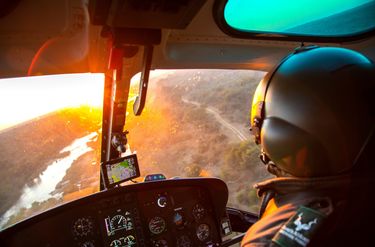
Airbus Helicopters: Does the helicopter play a role in protecting the park's animals?
David Simelane: Over the past decade we have been busy from an anti-poaching perspective, where we have been pummeled left, right and centre. We have been standing our ground and are happy to say there has been a reduction in poaching over the past couple of months. We complete about 500 hours of flying between the months of August and September completing census, where we go through the Kruger National Park with a fine-tooth comb, making sure that we have the right population of rhinos and elephants.
We are often flying low level, in the vicinity of a lot of birds and nature. When we're on anti-poaching missions, we're flying alongside various other aircraft. We have previously found an orphaned rhino, by the virtue of the fact of the mother having been poached. We have to sedate the rhino. Depending on the size, either lift it by cargo hook, or we have to put it in the back of the helicopter.
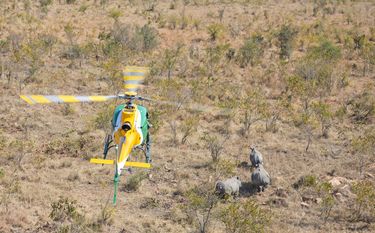
Airbus Helicopters: Do you often use the helicopter for medical and veterinary missions?
David Simelane: The Airbus H125 is the best platform for us here at SANPARKS. We are a service provider to the different SANParks departments ranging from scientific services to ranger services, conservation services to veterinary wildlife services. If we're going to be darting rhinos whilst doing de-horning, we've resorted to having to de-horn all of the rhinos that we have in the Kruger National Park. We have to fly with the doors slid to the back, and have a vet with us to be able to put the vet in position to dart.
We have rangers that patrol on a regular basis, and sometimes there are incursions with wild animals. I've personally experienced a ranger who had been trampled by a buffalo. We urgently had to rush a doctor to the scene. Luckily the ranger survived the contact with the buffalo and is back at work, thanks to the helicopter and quick response of the doctor and aircrew.
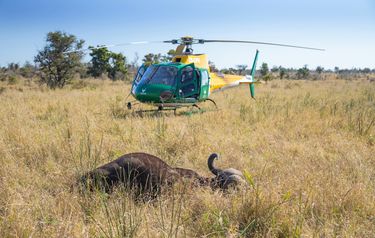
Airbus Helicopters: How does the H125’s performance support the operations?
David Simelane: The environment we are flying in is an unforgiving environment, so we prefer to have a uniform fleet, ensuring all pilots are familiar with the same helicopter, providing consistency. Ease of flight with the FLI, enables us to concentrate on the necessary external factors which are many in this environment.
H125 helicopters are very useful in this environment. From a density altitude (DA) perspective, we often exceed a DA where many other helicopters would struggle, we don’t have that many issues when we have a full complement of passengers and full fuel in 40 degrees Celsius, which we often have in the Kruger National Park in summer.
In terms of census, we are able to fly with the doors open, which provides us with a full view and that is really important for this activity. The ability to load as heavy as 1400 kilograms is by far one of the biggest advantages with this particular helicopter in our fleet.
